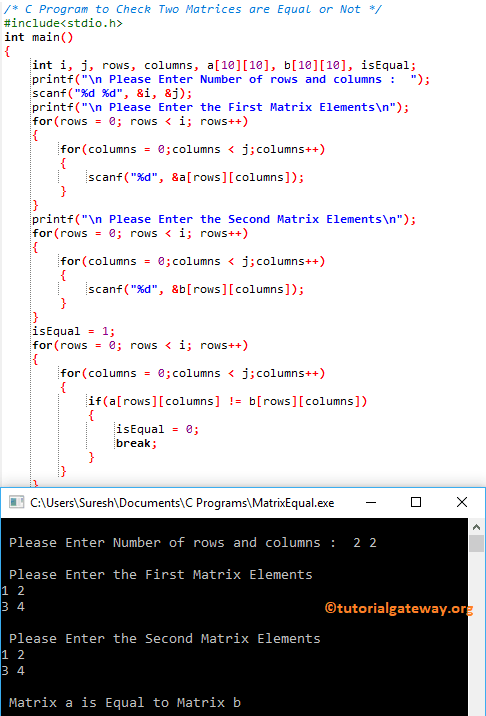

Printf(d,a > b) is 1.Std::cout y actually evaluates as (!x) > y. Since 20 is not greater than 20 but 20 is equal to 20 so the expression a > b is true.As c langauge writes 1 for true so the result of statement. New programmers often make the following mistake: #include In greater than or equal to C languge checks both the operators > and if either one of them is valid the result will be true. The earlier computer langauge FORTRAN that was (and is) used for more.One thing to be wary of is that logical NOT has a very high level of precedence. You can use for loop to iterate, but in this example we will use while loop.C and the unix shells use for not equal, it comes from the maths symbol.
#include If (value > 10 & value 10) AND the right condition (value < 20) are both true. This is actually two conditions: we need to know if x is greater than 10, and also whether x is less than 20. If the matrix is A, then its main diagonal are the elements whos row number and column number are equal.The correct way to write the above snippet is: #include Std::cout y will be evaluated first, and then logical NOT will flip the Boolean result.For example, we might want to know if the value of variable x is between 10 and 20.
In this case, the logical AND operator will go ahead and return false immediately without even evaluating the second operand! This is known as short circuit evaluation, and it is done primarily for optimization purposes.Similarly, if the first operand for logical OR is true, then the entire OR condition has to evaluate to true, and the second operand won’t be evaluated.Short circuit evaluation presents another opportunity to show why operators that cause side effects should not be used in compound expressions. If the first operand evaluates to false, logical AND knows it must return false regardless of whether the second operand evaluates to true or false. If any of these conditions are false, the else statement will execute.In order for logical AND to return true, both operands must evaluate to true. If neither are true, or only one is true, the logical AND operator evaluates to false, and the else statement executes.As with logical OR, you can string together many logical AND statements:If (value > 10 & value < 20 & value != 16)If all of these conditions are true, the if statement will execute.
Not Equal In C Full Of Potential
However, logical AND has higher precedence than logical OR, thus logical AND operators will be evaluated ahead of logical OR operators (unless they have been parenthesized). Avoid using expressions with side effects in conjunction with these operators.As with logical and bitwise OR, new programmers sometimes confuse the logical AND operator (&) with the bitwise AND operator (&).Mixing logical AND and logical OR operators in the same expression often can not be avoided, but it is an area full of potential dangers.Many programmers assume that logical AND and logical OR have the same precedence (or forget that they don’t), just like addition/subtraction and multiplication/division do.


 0 kommentar(er)
0 kommentar(er)
